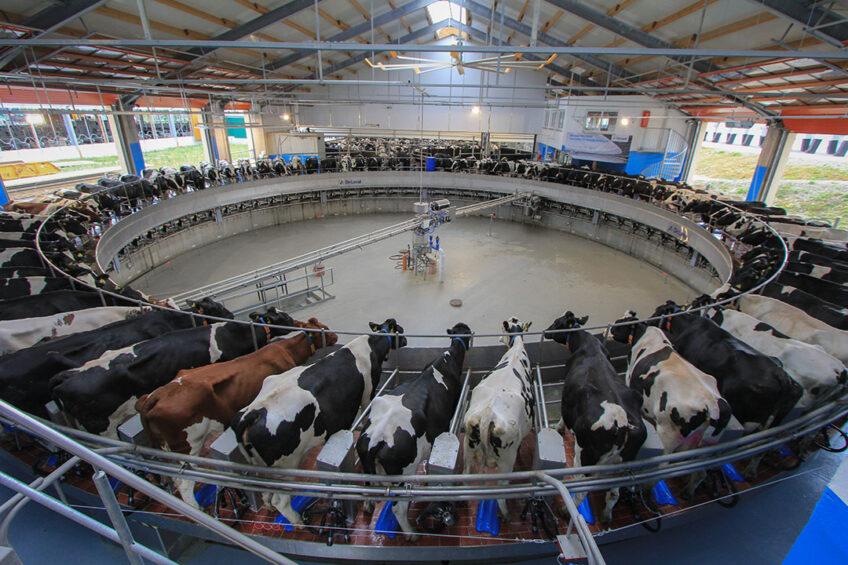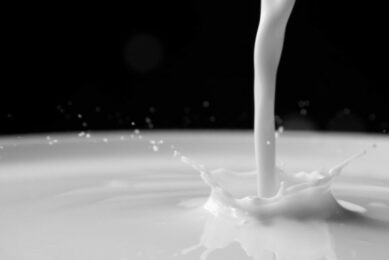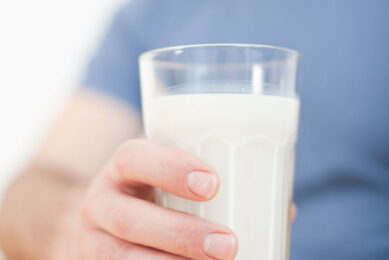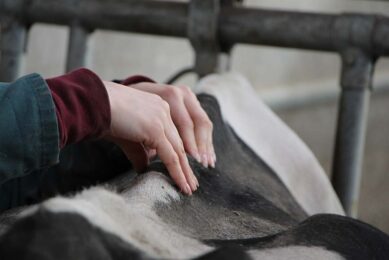2030: Fewer dairy farms and new players

Around 14 million dairy farms will cease production around the world by the year 2030. At the same time, world milk production is growing and new players are becoming stronger on the dairy market.
The world milk production is expected to grow by an average 35% internationally by 2030 to supply the demands from a population of an estimated 8.7 billion people by that time (1.7 billion more than today). Milk production will increase by 304 million tonnes by 2030, and per farm by 54%. Milk consumption is set to increase by around 16% per capita and the average milk yield per cow will rise by 23%. This will all be done at less farms as it is expected that the number of dairy farms will be reduced to 104 million by 2030, influenced by supply and demand as well as political decisions and succession issues.

Syria: One of the small players to become big
But where will all the milk be produced in the future? It seems that milk production is not only the trade of the big dairy countries anymore as we see smaller countries becoming potential bigger players. Dairy experts suggest the current top 3 dairy exporting regions in the world – European Union, New Zealand and the United States – will remain in pole position until 2030 but there could also be some surprises climbing the leader board in this period. According to the German dairy research network, IFCN, South Asia has the greatest potential to grow and will increase production by 64% between 2017 and 2030.
Next on the list is Africa with a capability of 36% growth, followed by Latin America at 33%, Near and Middle East at 27% and North America at 26%. Western Europe has a 14% capacity to grow. Post-Soviet countries also have significant potential for development in the near future will be able to compete with the present global players of the dairy market. One of the major surprises forecast is that Syria will become a major player in dairy export markets in the future. Ghassan Sayegh, a dairy expert from Lebanon, says Syria has a newfound potential to emerge as a stronger dairy producer with the help of financial investment from Russia. China is also an interesting player in the industry and produced 36.55 million tonnes of milk in 2017, which was down 2.1% from the level reached in 2008.
EU to focus more on value-added products
The world export market for dairy produce totalled US$ 27.5 billion in 2017, influenced by New Zealand which supplied 20.4% of this. The EU says it could supply ‘close to 35% of global demand by 2030’ focusing more extensively on value-added products such as organic products or those with protected geographical indications. EU exports of cheese, butter, skimmed milk powder, whole milk powder and whey powder are expected to grow on average by around 330,000 tonnes of milk equivalent per year. As for the EU market, close to 900,000 tonnes of additional milk per year would be needed to satisfy its growth for traditional dairy products, which is mainly cheese. By contrast, European liquid milk consumption is expected to continue declining in the EU.
EU milk production should experience a modest increase from 2018 to 2030 at 0.8% per year on average. Production is estimated at 167 million tonnes in 2018, and should reach 182 million tonnes by 2030. Milk yield should also increase by 2030, 17% above the level of 2017. However, it will be at a slower pace than in proceeding decades due to environmental constraints on further dairy production.
Also read: IFCN: More milk needed by 2030
China: Back in business with bigger growth rates
In 2017, China’s total imports of dairy products was 2.45 million tonnes, equivalent to 14.27 million tonnes of raw milk, 4.5 times that of 2008. For China, New Zealand is the most important source to import dairy produce from.
Around 92% of whole milk powder is imported from New Zealand, along with 47% of skimmed milk powder and 86% of its butter. In addition, 55% of milk whey powder is imported from the United States, and 36% of fresh milk is imported from Germany. Over the next 10 years, China’s dairy industry will change from an adjustment period to a steady growth period. China says that by 2027 the proportion of farms with over 100 cows will reach 80% and the yield per cow per year will reach an average of 9 tonnes. Output is expected to reach 43.8 million tonnes. The average annual growth rate of milk production in the next 10 years is expected to be 1.8%, which is significantly higher than the average annual growth rate of 0.4% in the past decade. An increase in the incomes of around 250 million to 300 million middle-class consumers in China will be the main driving force for an increase in dairy consumption there going forward. It is estimated that China’s per capita dairy consumption will be 40.5 kg in 2027, up 22% from 2017. In the same timeframe, the total consumption of dairy products will be 63.61 million tonnes, up 25% from 2017, with an average annual growth rate of 3.2%, which maintains the same rate during the past 10 years.
Join 13,000+ subscribers
Subscribe to our newsletter to stay updated about all the need-to-know content in the dairy sector, two times a week.










